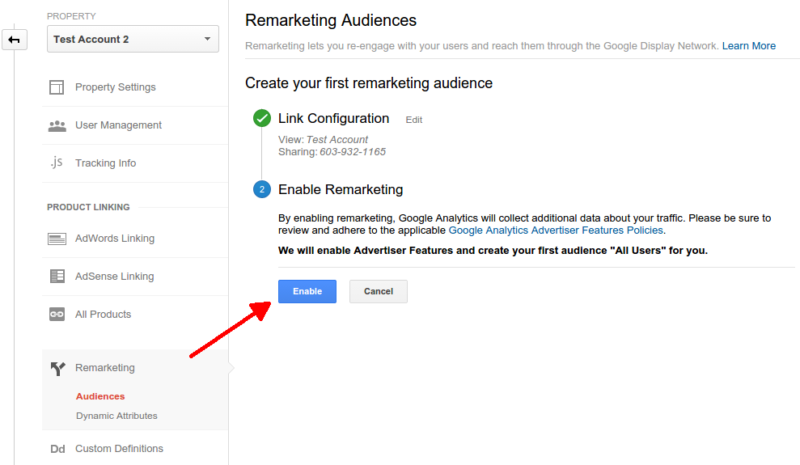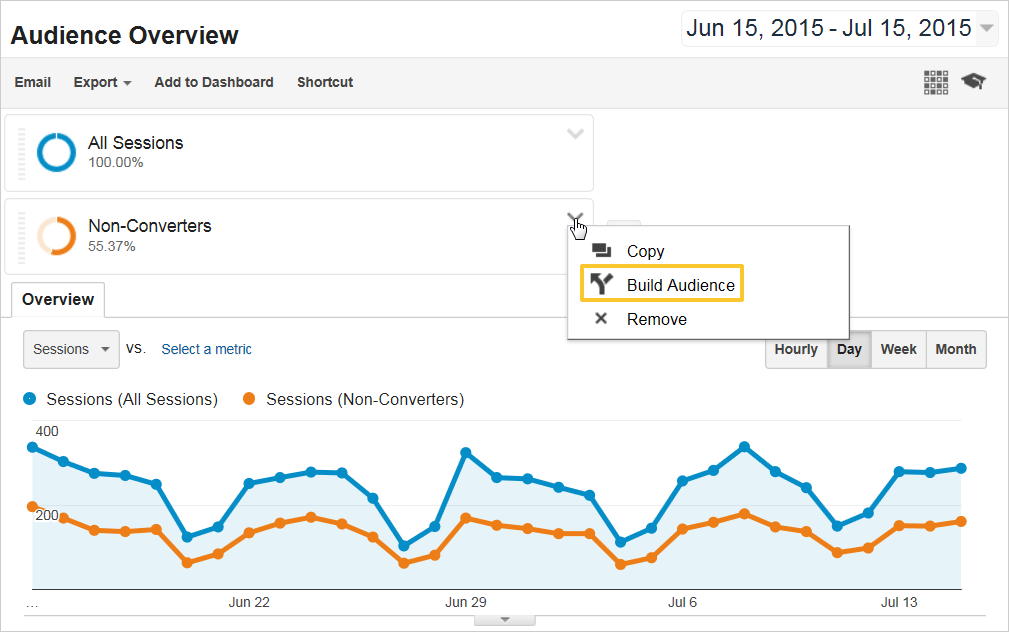Efficient Strategies for Remarketing In Google Analytics
Wiki Article
Optimize Your ROI With Remarketing in Google Analytics
In the world of digital marketing, the application of remarketing strategies within Google Analytics has actually proven to be a potent device for enhancing roi. By harnessing the power of user information and customizing ads to specific audience sectors, businesses can dramatically amplify their conversion rates. However, the actual vital lies in the art of precision - understanding individual behavior, crafting compelling ads, and continuously refining approaches to drive optimal outcomes. The journey to maximizing ROI via remarketing is a nuanced course led with insights and possibilities that can reshape the trajectory of your advertising and marketing ventures.Comprehending Remarketing in Google Analytics
Recognizing remarketing in Google Analytics is essential for enhancing your electronic advertising technique. Remarketing allows you to target customers who have formerly seen your internet site or connected with your application, providing them with tailored ads as they browse other websites or use various other apps within the Google Show Network. This approach aids keep your brand name top of mind and urges users to go back to your website, eventually raising the chance of conversion.By utilizing Google Analytics, you can track the performance of your remarketing projects, getting beneficial understandings into customer habits, involvement, and conversions. This information allows you to improve your bidding process, targeting, and messaging strategies to boost the total effectiveness of your campaigns.
Furthermore, comprehending the different types of remarketing checklists available in Google Analytics, such as typical, vibrant, and similar target markets, allows you to create tailored and very fractional projects customized to certain customer segments. This degree of granularity can considerably improve the significance and effect of your remarketing initiatives, ultimately optimizing your roi.
Establishing Remarketing Listings
To efficiently execute remarketing projects in Google Analytics, the first action involves configuring and creating remarketing lists targeting details customer sectors based on their interactions with your internet site or app. By establishing remarketing listings, you can customize your advertising and marketing efforts to get to individuals who have currently revealed interest in your services or items.To start, browse to the Admin section of your Google Analytics account and pick the Home where you intend to develop the remarketing list. Under the Building column, click on 'Target market Definitions' and select 'Audiences.' Next off, click on the red 'New Target market' switch and select 'Create New' to define the parameters for your remarketing checklist.

Crafting Effective Remarketing Ads

When crafting your ads, emphasis on producing attention-grabbing headings and engaging visuals that stick out to potential clients. Include solid calls-to-action that urge individuals to review your site and finish a desired activity. Utilize dynamic remarketing to show individualized ads featuring product and services that users have previously seen on your site.
Furthermore, make certain that your ads are mobile-friendly since a considerable section of internet traffic originates from mobile phones. Examination different ad variations to recognize which messages and styles drive the very best results. By continuously refining and enhancing your remarketing ads based upon efficiency data, you can maximize their efficiency and improve your roi.
Studying Remarketing Performance

Through Google Analytics, marketing professionals can track the performance of their remarketing projects in real-time, allowing them to determine trends, patterns, and locations for renovation without delay. By analyzing the information, marketers can establish which ads are executing well, which audience sectors are reacting positively, and which channels are driving the most conversions. This level of granularity allows marketing experts to make data-driven decisions to enhance their remarketing campaigns for better results.
Maximizing ROI With Remarketing
Analyzing remarketing data in Google Analytics allows marketing professionals to determine chances for optimizing return on investment (ROI) through tactical changes - What Is “Remarketing” In Google Analytics?. To make the most of ROI with remarketing, it is essential to understand the habits of your audience. By evaluating individual communications, such as the web pages they saw, the items they checked out, or the actions they handled your site, you can customize your remarketing projects betterSegmenting your audience based upon their behavior enables you to develop individualized and targeted advertisements that are most likely to reverberate with them. By showing pertinent advertisements to particular sections of your audience, you can boost the opportunities of conversion and ultimately enhance your ROI.
Additionally, testing different advertisement creatives, messaging, and offers can assist recognize what reverberates best with your audience. A/B screening allows you to experiment with various components of your ads to identify what drives the greatest interaction and conversion rates.
Conclusion
In verdict, maximizing ROI with remarketing in Google Analytics requires a critical technique to analyzing user behavior, segmenting target markets, creating tailored ads, and enhancing project efficiency. By leveraging data-driven understandings and evaluating different methods, businesses can enhance their remarketing initiatives to drive higher engagement and conversion prices. This organized approach guarantees that resources are successfully designated towards making best use of rois in remarketing projects.Next off, click on the red 'New Target market' button and choose 'Create New' to define the criteria for your remarketing listing.
By continuously refining and optimizing your remarketing ads based on efficiency information, you can optimize their effectiveness and boost your return on financial investment.
By delving into these insights, Look At This online marketers can acquire a comprehensive understanding of exactly how their remarketing efforts are reverberating with their target audience and driving conversions. To optimize ROI with remarketing, it is critical to recognize the behavior of your target market.In verdict, taking full advantage of ROI with remarketing in Google Analytics requires a calculated strategy to evaluating customer habits, segmenting target markets, creating tailored advertisements, and maximizing project efficiency.
Report this wiki page